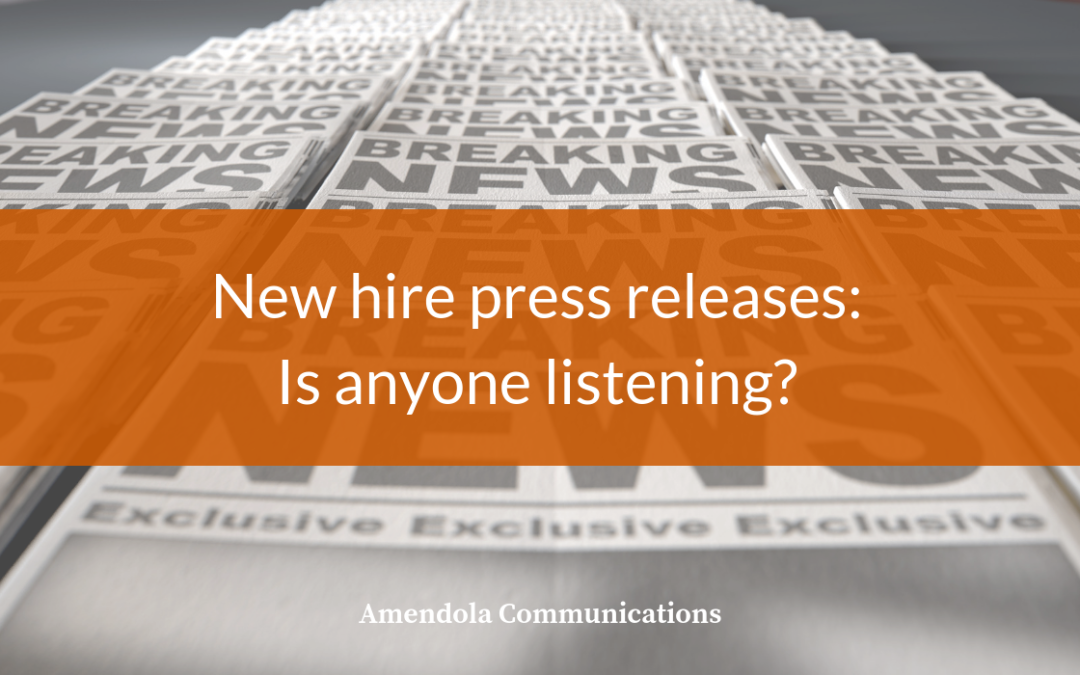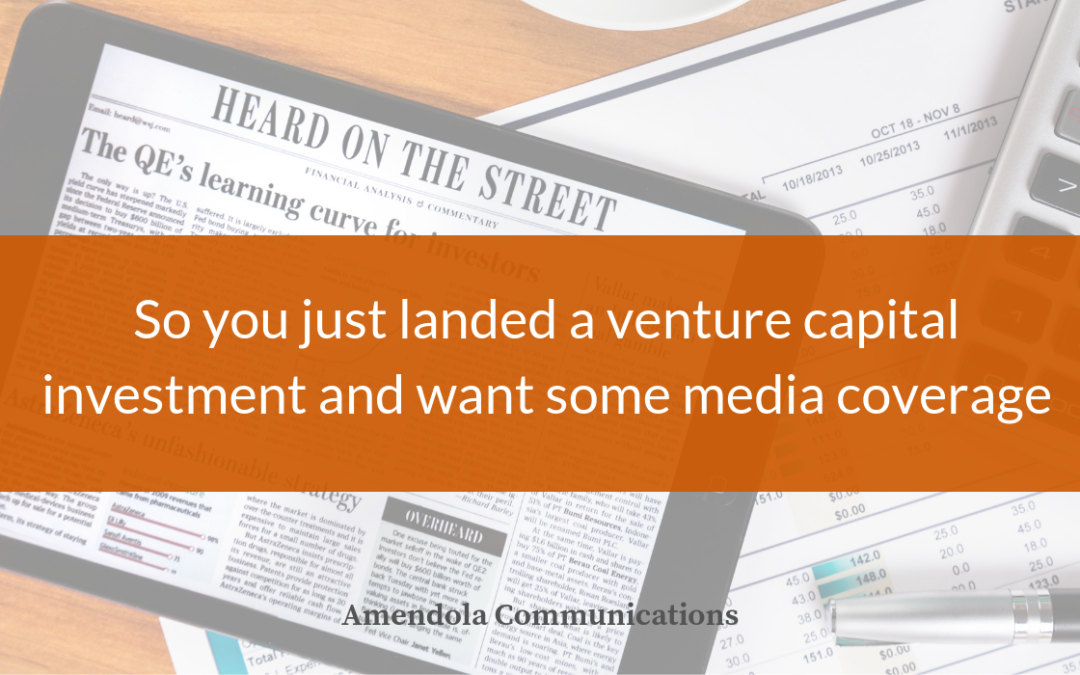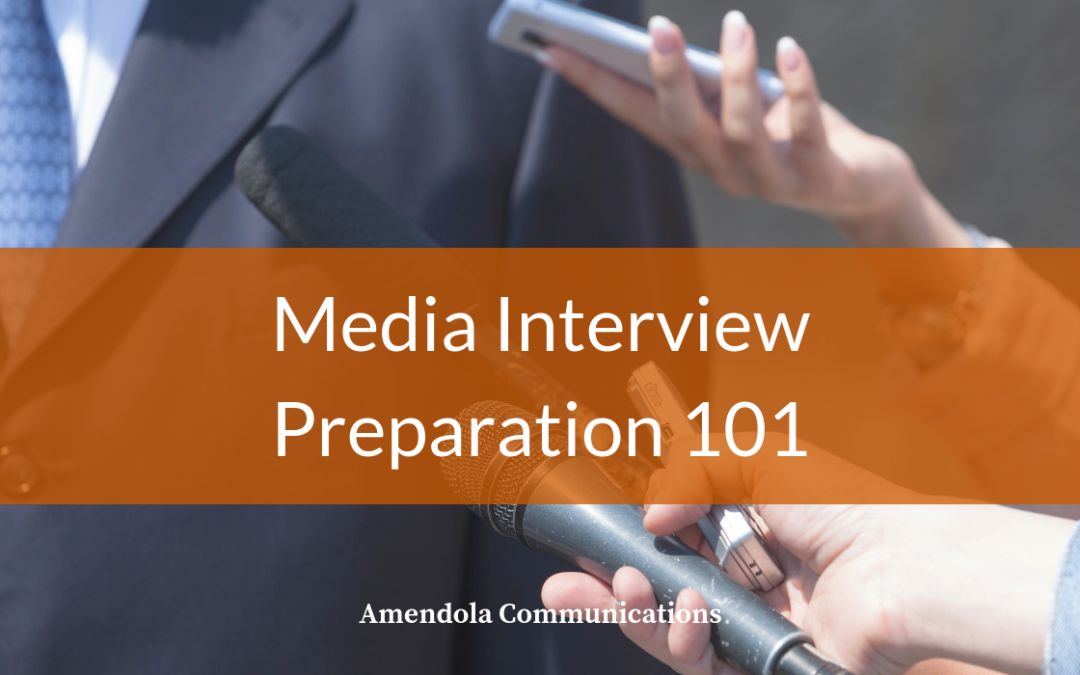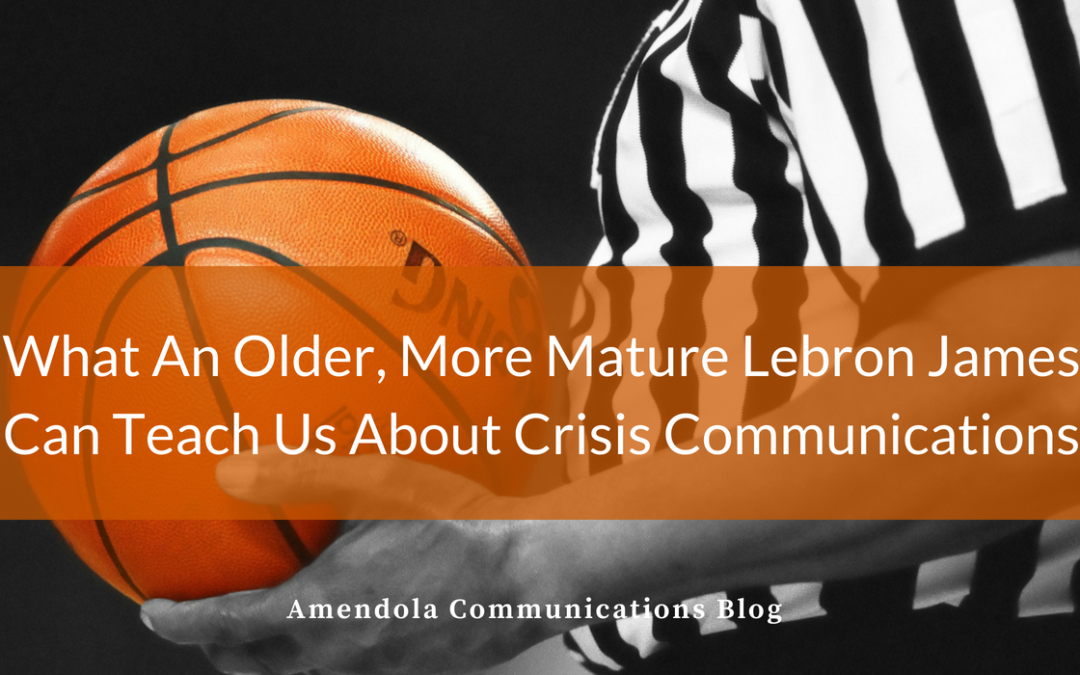
by Brandon Glenn | Jul 3, 2019 | Blog
Anyone who’s been in the media, marketing or communications industries has likely seen hundreds. If you’re an ex-reporter-turned-PR-guy like me, then you’ve no doubt seen thousands.
Unfortunately, I’m not talking about performance bonuses or letters of adoration from admirers. I’m talking about new-hire press releases.
Just about everybody issues them, but not exactly every media outlet covers them. In fact, quite a few health IT publications don’t regularly cover new hire announcements that aren’t of the big-name, big-company, big-title variety. (In other words, if your release is about the new CEO at Cleveland Clinic or chief technology officer at Haven, the new Amazon-Berkshire-JPMorgan healthcare company, you don’t have to worry about much of this.)
For large companies and for CEO hires, it’s standard practice to issue a press release. For everyone else, the situation gets a little murkier. So, in those cases, are new hire releases worth the investment of time, effort and resources? Often, yes, though certainly not always.
For anyone on the fence about issuing a new-hire press release, here are three questions that may provide clarity on which way to go:
Can you benefit from local media coverage? Some companies are interested only in national and trade coverage, electing to eschew local coverage, and that’s fine. For example, it might make little sense for a company interested in reaching decision-makers at electronic health records (EHR) companies to obtain media coverage in its local market, because there may be few, if any, EHR vendors headquartered there. In other cases, it could be advantageous, such as when a young company has received a venture capital investment and wants to go on a hiring spree and could benefit from some local publicity. New-hire announcements are much more likely to generate local coverage than national or trade coverage, so companies seeking local coverage may benefit from a release.
Are you looking to generate market awareness? Just because national and trade journalists elect not to write about a new hire, it doesn’t mean that no one is paying attention. Analysts, investors, reporters and close other-industry observers in those words, people whose job description includes following the latest development health IT may very well notice. Press releases, in general, and new-hire releases, in particular, are an excellent way to introduce your company’s name to people who may later become valuable contacts.
Did you recently launch a new initiative? Maybe you’ve recently launched a new product, entered a new market or shifted your company’s strategy. A new hire release is another means of spreading the word, even if you’ve mentioned it earlier in a prior release — assuming this initiative is any way connected to the hire. When I was researching a new company in my reporter days, one of the first steps I’d take was to scan the company’s press releases page on its site because it gave me a strong idea of what the company considered its major to-date accomplishments. In that respect, think of a company’s press releases new hires, included as a track record of the noteworthy achievements it wants to share with the world.
Though sometimes regarded as the red-headed stepchild of press releases, new-hire press releases can be worthwhile and valuable; just make sure you ask yourself the above questions before publishing one.

by Brandon Glenn | Apr 24, 2019 | Blog
Closing a venture capital (VC) investment is a big deal for any young company.
After all, less than 1 percent of all U.S. companies receive VC money. A VC investment represents market validation. An experienced group of industry veterans has decided that your company holds the promise and potential to make them (and maybe even yourself and a few of your employees) rich. They think you have an innovative idea, and their cash will serve as the catalyst sparking that growth.
Sounds great and it is. Landing VC money is a huge accomplishment for any company that is able to make it through what is generally an ultra-competitive process.
It’s also a great opportunity to generate some media coverage, which for many young companies, will represent their first introduction to the market and first occasion to share their stories with potential customers, partners, acquirers and other investors.
The only problem? Announcements of VC investments happen all the time, so the media is not lacking in coverage options. To make sure your announcement about obtaining a venture capital investment gets noticed, keep these four integral principles in mind.
Do not withhold the dollar amount: If you’re looking to create media interest at all, I cannot stress enough the importance of including the dollar amount of the investment. This is a very important point for reporters who need some way of assessing the gravity of all the funding announcements they see. Obviously, $50 million will look better in headlines than $5 million, but $1 million looks a lot better than nothing. In my reporter days, when I saw a funding announcement without a dollar amount, it immediately went to the bottom of my queue of potential upcoming stories. Don’t fumble away this valuable opportunity by failing to get approval from your investors to include the dollar amount.
Describe how you’ll use the investment: All reporters expect that you’ll use your recent cash infusion to drive “growth,” but they’ll want more specifics than that. What are your key measures of growth? If it’s customer acquisition, what type of customers are you looking to acquire? If it’s employee headcount, how many are you looking to hire? (BONUS: Including potential jobs numbers in an area can help you get into local media AND aid in your recruiting efforts.) If it’s revenue, by what percentage are you hoping to grow revenue in the next year? Obviously, you don’t want to reveal any secret strategies to competitors, but your investment announcement provides an opening to begin shaping your company’s story and the way it’s publicly perceived. Do that by articulating a clear vision for the future that describes exactly what “growth” means to you.
Make sure executives are available for interviews on the day of the announcement: For the chance to pose questions like those mentioned above plus plenty more reporters will be interested in speaking with a top company executive, preferably the CEO. After coordinating key talking points with the CEO, be sure to coordinate schedules. As important as a funding announcement is, it’s not realistic to expect an executive to block off her entire day for interviews. But one or two decent chunks of time on the day of the announcement isn’t too much to ask.
Be sure to include investor and customer quotes: A VC investment serves as an important representation of market validation, and the funding announcement is a chance to shout that validation from the rooftops. A quote from the investor is a must, explaining why the VC firm thinks this company is one to take a risk on, why the market will ultimately choose their technology as a winner and what type of growth potential exists in this particular market niche. For bonus points, include a customer quote explaining (preferably with quantifiable outcomes) exactly how your technology helped them address a significant business problem.
Yes, it can be difficult to gain media coverage for venture capital announcements due to all the stiff competition out there. But it is possible to get journalists’ attention.
Drafting an announcement that follows the key principles above will help your announcement stand out while giving journalists what they want and need – a good, complete story to tell. And the same story that helped you win the investment in the first place.

by Brandon Glenn | Feb 6, 2019 | Blog
Some executives dedicate ample time and effort to media interview preparation studying the journalist’s previous coverage, developing carefully considered talking points while others, not so much.
Guess which ones are typically more pleased with the outcomes of their interviews?
Nonetheless, it’s important to keep the significance of media interviews in perspective. Unlike a new product release gone awry or ethical misconduct by management, a bad interview is unlikely to cripple a company’s future. More likely, an interview gone off-the-rails results in some temporary embarrassment and heartburn for the company’s leadership obviously something everyone would prefer to avoid. Still, there’s no need for an interview subject to work herself into a nervous state of sweaty palms, butterflies in the stomach or stuttering speech.
While no one would suggest that executives need to prepare for a media interview with the time and diligence that they’d devote to a board meeting, for example, media interviews are indeed an important conduit to introducing a young company to potential investors, partners, employees and the market in general.
Confidence is key, and preparation breeds confidence. With that in mind, here are a few key preparation tips beyond the usual “Do your homework!” to turn any interview into a positive showcase for you company and your thought leadership.
Ask questions before the interview: What type of readers/viewers/listeners comprise the media outlet’s audience? Why is the reporter interested in talking to you? How did he/she find out about your company? What topics will the interview cover? Will the reporter share any questions ahead of time? Will you have the opportunity to review the article before it’s published (probably not), or any direct quotes from you that the reporter plans to use (quite possibly)? Don’t let any excitement or nervousness about the interview prevent you from asking a bunch of questions to the reporter soon, he/she’ll be asking plenty of you.
Research the reporter and media outlet: Check out the reporter’s bio or LinkedIn page, and look for some clues from his/her background to build pre-interview rapport. Maybe the reporter attended the same college as you or has worked at a company with which you have some familiarity. This is great fodder for small talk before the interview begins, which will help to establish a friendly tone at the interview’s outset.
Aside from the reporter’s personal background, study the past few articles he/she’s written. They’ll provide clues for what interests him/her, what angles the reporter likes to take on stories and what types of questions might be asked.
Hammer key messages: I like to think of media interviews as a Venn diagram, featuring two circles one representing the reporter’s interests and the other representing those of the interview subject. Rarely if ever will these two circles completely overlap. In fact, only about 10 percent of each may overlap, but that 10 percent is where you’ll live during the interview. That’s the space where you’ll be able to discuss your industry and your company’s accomplishments and capabilities without seeming too sales-y or self-promotional.
After you’ve asked the right questions and done your research, it’s time to prepare talking points that hammer home the key messages you’d like to convey in the interview. Make each of these points brief, conversational and punchy. Provide a little supporting evidence or an anecdote and move on to the next one. Don’t be afraid to re-emphasize points you’ve previously made; repetition helps reporters prioritize the importance of the information you’ve covered during the interview.
After the interview: Once the interview is over, breathe a sigh of relief and revel in a job well done — although the work isn’t done quite yet. Follow up with the reporter to see if any additional information or clarification is needed before the piece is published. Once the piece is published, promote it via all channels available to your company social media, company blog, website, email campaigns and the like.
Does this seem like a lot of work? Sometimes it can be, but the positive is that a strong PR firm will do all the legwork for you asking important questions of the reporter, researching the reporter and media outlet’s background and crafting talking points. Then it’s just up to the executive to think about and digest the information and proceed with confidence towards exceling in the interview.

by Brandon Glenn | Dec 12, 2018 | Blog
While every tool in the PR arsenal from press releases to bylines offer value in generating attention, a strong case study has the potential to stand above the rest as a real-world example of how a vendors’ product helped a customer solve a vexing business problem.
A strong case study can help a company begin to move beyond talk to illustrate action specifically the positive outcomes, enhanced revenue or cost savings a prospect can achieve by taking the action of implementing your product. Customers want to know you have experience solving problems just like the ones their company is currently experiencing, and a case study provides the perfect opportunity to demonstrate exactly what your company and product accomplished to deliver value to a similar organization.
A well-executed case study must tell a story. In this story, the hero is the customer that boldly and courageously implemented your product to better serve her own patients or customers. The vendor plays the role of the humble servant, providing support and guidance to help the hero accomplish her goals and save the day.
In its most basic form, a case study’s story consists of “Problem -> Solution -> Results” but a strong case study requires more. Think of it as a job interview in which your primary challenge is to convince a prospect why your product is the one she should hire for the position.
When developing your next cast study, be sure to include these four essential elements:
- Customer quotes: Don’t just tell us how the customer feels about your product, show us by using the customer’s own words. A customer’s own words always carry more weight and create a greater impact than what a vendor says about its own solution. The best way to obtain valuable quotes is to interview end-users of the product.
- Quantified results: Nothing is more demoralizing for a case study consumer than to feel interest and curiosity while reading through the introduction, problem and solution sections, only to come to a disappointing results section that contains vague language of improvement and no key metrics. It’s a sure way to turn off a prospect who was beginning to consider your solution. After implementation, did your solution help the customer make money, save money, see more patients, or improve operations in some other quantifiable way? Let us know about it in as much detail as possible. While some customers are understandably reluctant to share specific dollar amounts, they’re more likely to approve of using percentages, such as “grew revenues 50 percent one year after adopting the solution.”
- What’s next: It isn’t lost on most people that a case study must include detailed information on how a customer has already used a vendor’s solution, but it’s easy to forget to include details about future plans. Does the customer plan to expand use of the solution with a new patient population, offer it at a new location or purchase a complementary product? Including this information will help prospects conceive of a long-term strategy for their adoption of your product.
- Call to action: Another easy-to-forget aspect of a case study is the call-to-action (CTA), which provides the vendor with an opportunity near the end of the piece to request a specific action from the reader. Whether you’re offering the reader more content to consume or a free giveaway, or asking them to fill out a form, be sure to make the experience as easy as possible for the user to complete.
Wherever your latest prospect is in the customer journey, a solid case study holds the possibility of providing that nudge to take the next step. When you sit down to plan out your next customer case study, don’t forget these four essential elements.

by Brandon Glenn | Aug 8, 2018 | Blog
In most cities, a sports star leaving to join another team wouldn’t quite reach the level of crisis. No doubt, the world has countless far more serious and urgent problems.
But Cleveland’s a little different than most cities. Egos are a bit more fragile here after decades of job loss, population decline, environmental damage, and not to mention sports ineptitude or so it seems to this (humble) outsider who first moved to Cleveland about a decade ago.
So after the Cleveland Cavaliers drubbing yet again at the hands of the Golden State Warriors in the NBA Finals in June, coupled with LeBron James impending free agency, thing were looking pretty bad for Cleveland. Despite hailing from nearby Akron and enjoying close ties with the local community, LeBron looked likely to depart Cleveland for a sexier, more glamourous destination, leaving the locals he left in his wake feeling abandoned and forgotten.
Unfortunately, that’s exactly what happened. But to LeBron’s credit, he learned from a past mistake, and let Cleveland fans down a little easier this time, while simultaneously providing a lesson on crisis communications.
We’ve seen this movie before
The date of “The Decision” by James – July 8, 2010 is one that lives in Cleveland sports infamy. On that night, the then-25-year-old who is perhaps the greatest sports star the city has ever known crushed his hometown fans by announcing on live TV his intention to “take my talents to South Beach and join the Miami Heat.” Next came the reaction. A city mourned, jerseys were burned, insults were hurled, and one melodramatic fan called it “the worst day of my life.”
Later that night, Cavaliers Owner Dan Gilbert hastily published a scathing open letter notoriously printed in comic sans font excoriating James for a “several-day, narcissistic, self-promotional build-up culminating with a national TV special.” Illustrating that Gilbert’s PR team had ready access to a thesaurus, the irate owner peppered his letter with several enjoyable descriptions of James and his decision, including “cowardly betrayal,” “shameful display of selfishness,” “shocking act of disloyalty,” and “heartless and callous action.”
To be clear, the majority of Cleveland fans weren’t angry at James for signing with Miami; they were upset by the “needless pain” he inflicted on the city for the spectacle of “The Decision,” which I recall one commentator comparing to a newly minted millionaire going on national tv to tell his high-school sweetheart he’s dumping her to move in with a supermodel.
Indeed, players change teams all the time (LeBron has now done it three times) “but no player has ever done it with the pomp, phoniness, pseudo-humility, and rehearsed innocence” as James, as a Chicago Sun-Times columnist correctly observed. That’s what understandably perturbed Cleveland fans, and later provided James with an opportunity to show growth in his style of public communication.
A second chance
After James spent four seasons in Miami and won two championships while making the NBA Finals every year, in 2014 he did what was once unthinkable. He mended fences (kind of) with Gilbert, rejoined the Cavs and led the city to its first major professional sports championship since 1964.
Then James broke Cleveland’s heart all over again. On July 1, 2018, the now-33-year-old James announced he was leaving the Cavaliers once more, having signed with the Los Angeles Lakers.
But this time it was different no self-serving, nationally televised special; no week-long buildup of drama and, thankfully, no jersey burnings or lamentations about the worst day of fans lives. James and his advisors simply delivered the news in 36-word press release:
LeBron James, four time NBA MVP, three time NBA finals MVP, fourteen time NBA All Star, and two time Olympic gold medalist has agreed to a four year, $154 million contract with the Los Angeles Lakers.
While unnecessarily trumpeting his major accomplishments on the court isn’t the height of modesty, James deserves credit for learning from his mistakes and rolling out his latest “decision” in a far more muted, low-key fashion.
And that brings us to what we can learn from James in crisis communications: Be brief, take responsibility, get to the point and don’t sugarcoat things.
While this is a lesson that apparently took James eight years to learn, healthcare organizations can learn from his mistakes by never committing them in the first place.
And it’s probably best to avoid ever proclaiming that you’re taking your talents anywhere.
Page 5 of 6« First«...23456»




